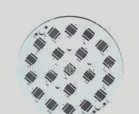1. Making a PCB board is not merely a straightforward task of drilling holes and inserting components.
2. While the production of the PCB itself isn’t overly complex, the real challenge arises during troubleshooting after the board has been completed.
3. Whether you are a hobbyist or an industrial engineer, encountering issues during debugging can be quite frustrating—much like a programmer facing a bug.
4. Some individuals have a keen interest in troubleshooting PCB circuit boards, akin to programmers fixing bugs.
5. However, there are not many common issues that arise with PCB circuit boards.
6. Common problems include circuit board design flaws, damage to electronic components, short circuits, and component failures.
7. Additionally, disconnection faults on PCB circuit boards are not uncommon.
8. Most PCB failures primarily occur in the components themselves, such as capacitors, resistors, inductors, diodes, transistors, and field-effect transistors.
9. Integrated chips and crystal oscillators can also sustain visible damage, and a straightforward way to identify issues with these components is through visual inspection.
10. Burn marks on the surfaces of damaged electronic components are often evident.
11. Such failures can typically be resolved by replacing the faulty components with new ones.
—
Feel free to ask if you need any further adjustments!

1. Of course, not all electronic component damage is visible to the naked eye, such as with resistors, capacitors, and diodes mentioned earlier.
2. In some instances, damage may be hidden beneath the surface, requiring professional inspection tools for repair.
3. Commonly used inspection tools include multimeters and capacitance meters; when the voltage or current of a specific electronic component is detected to be outside the normal range, it indicates a problem with that component or an upstream component.
4. In such cases, it is advisable to directly replace the component and verify its functionality.
5. If a component is faulty, it can often be identified either visually or through instruments, yet sometimes, we may face issues on a PCB where the circuit board does not function correctly despite no visible damage.
6. Many beginners encounter this dilemma and feel compelled to either create a new board or purchase one.
7. In reality, this situation often arises because the components may exhibit unstable performance due to their interdependent operation during installation.
8. When this occurs, standard instruments may not be of much help; you should assess the potential fault range based on current and voltage readings and aim to narrow it down as much as possible.
9. An experienced engineer might quickly identify the fault area, but pinpointing the exact defective component can be uncertain.
10. The only reliable method is to replace the suspect components one at a time until the problematic one is identified.
11. Last year, my laptop motherboard suffered water damage, and during the repair process, I encountered undetectable faults.
12. Throughout the repair, I replaced three components: the power supply chip, a diode, and a USB charging component (the blue notebook socket, which allows charging while powered off).
13. Ultimately, after extensive testing and investigation, I discovered that a component adjacent to the South Bridge chip had shorted.
14. This exemplifies issues related to electronic components; however, since the PCB is the foundation for these components, circuit board failures are also inevitable.
15. A straightforward example is a dead solder joint; due to manufacturing processes, PCB corrosion can lead to disconnections.
16. In such cases, if wire repair is not feasible, a thin copper wire jumper can be utilized to resolve the issue.
17. When PCB failures are not visibly damaged, troubleshooting can be quite challenging.
18. The troubleshooting process requires focus, and discovering the problem brings an inexplicable sense of accomplishment, much like a programmer fixing a bug.
19. In this mindset, I often enjoy exploring difficult-to-repair boards, as I find it to be a rewarding challenge.




